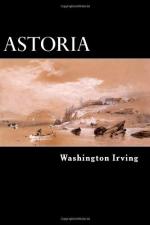The islanders are a comely race, of a copper complexion. The men are tall and well made, with forms indicating strength and activity; the women with regular and occasionally handsome features, and a lascivious expression, characteristic of their temperament. Their style of dress was nearly the same as in the days of Captain Cook. The men wore the maro, a band one foot in width and several feet in length, swathed round the loins, and formed of tappa, or cloth of bark; the kihei, or mantle, about six feet square, tied in a knot over one shoulder, passed under the opposite arm, so as to leave it bare, and falling in graceful folds before and behind, to the knee, so as to bear some resemblance to a Roman toga.
The female dress consisted of the pau, a garment formed of a piece of tappa, several yards in length and one in width, wrapped round the waist, and reaching like a petticoat, to the knees. Over this kihei, or mantle, larger than that of the men, sometimes worn over both shoulders, like a shawl, sometimes over one only. These mantles were seldom worn by either sex during the heat of the day, when the exposure of their persons was at first very revolting to a civilized eye.
Towards evening several of the partners and clerks went on shore, where they were well received and hospitably entertained. A dance was performed for their amusement, in which nineteen young women and one man figured very gracefully, singing in concert, and moving to the cadence of their song.
All this, however, was nothing to the purpose in the eyes of Captain Thorn, who, being disappointed in his hope of obtaining a supply of pork, or finding good water, was anxious to be off. This it was not so easy to effect. The passengers, once on shore, were disposed, as usual, to profit by the occasion. The partners had many inquiries to make relative to the island, with a view to business; while the young clerks were delighted with the charms and graces of the dancing damsels.
To add to their gratifications, an old man offered to conduct them to the spot where Captain Cook was massacred. The proposition was eagerly accepted, and all hands set out on a pilgrimage to the place. The veteran islander performed his promise faithfully, and pointed out the very spot where the unfortunate discoverer fell. The rocks and cocoa-trees around bore record of the fact, in the marks of the balls fired from the boats upon the savages. The pilgrims gathered round the old man, and drew from him all the particulars he had to relate respecting this memorable event; while the honest captain stood by and bit his nails with impatience. To add to his vexation, they employed themselves in knocking off pieces of the rocks, and cutting off the bark of the trees marked by the balls, which they conveyed back to the ship as precious relics.




